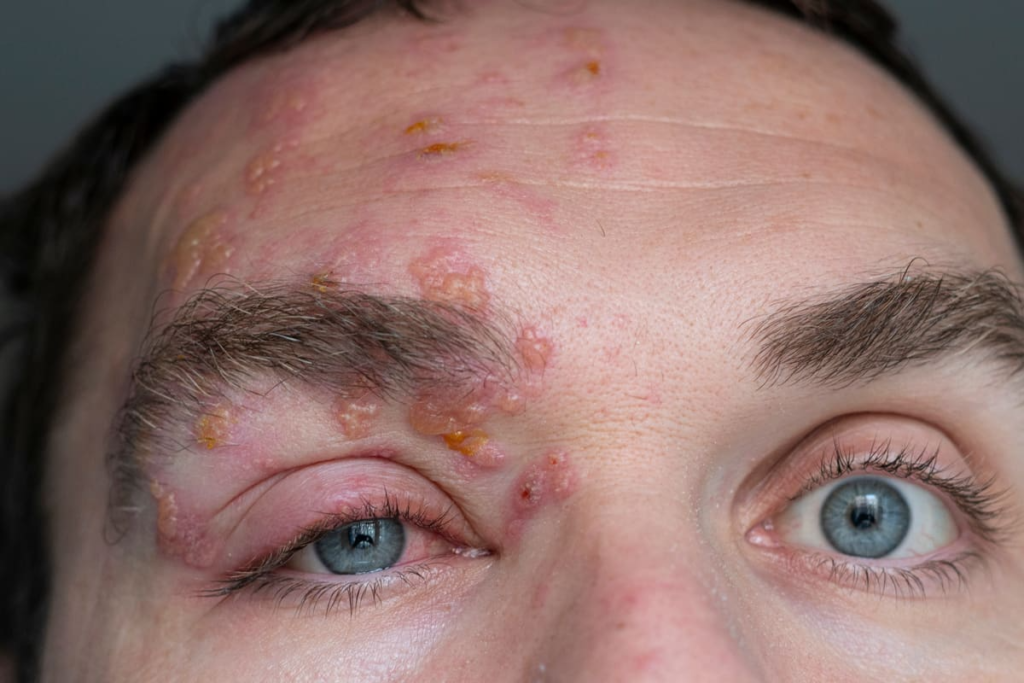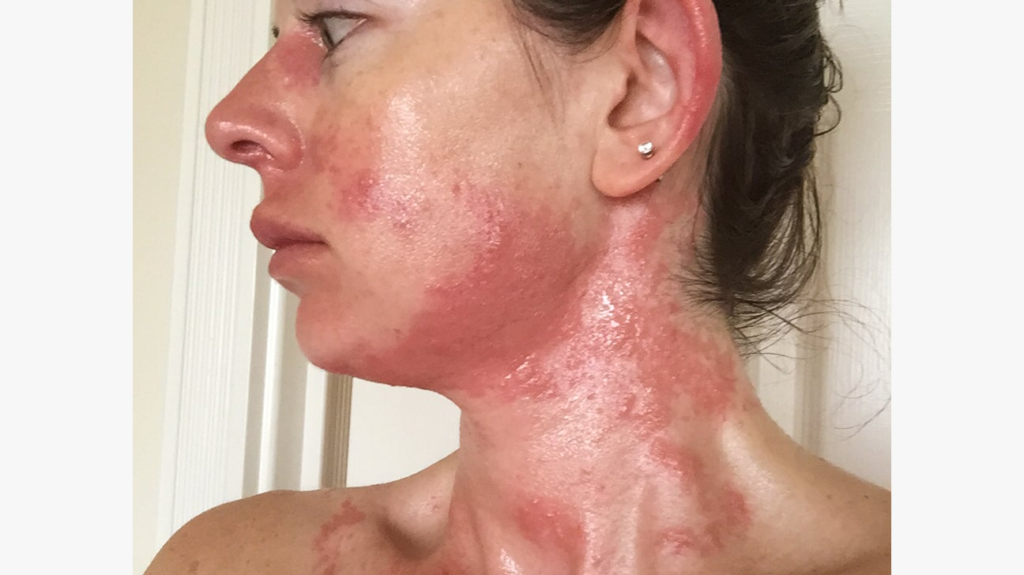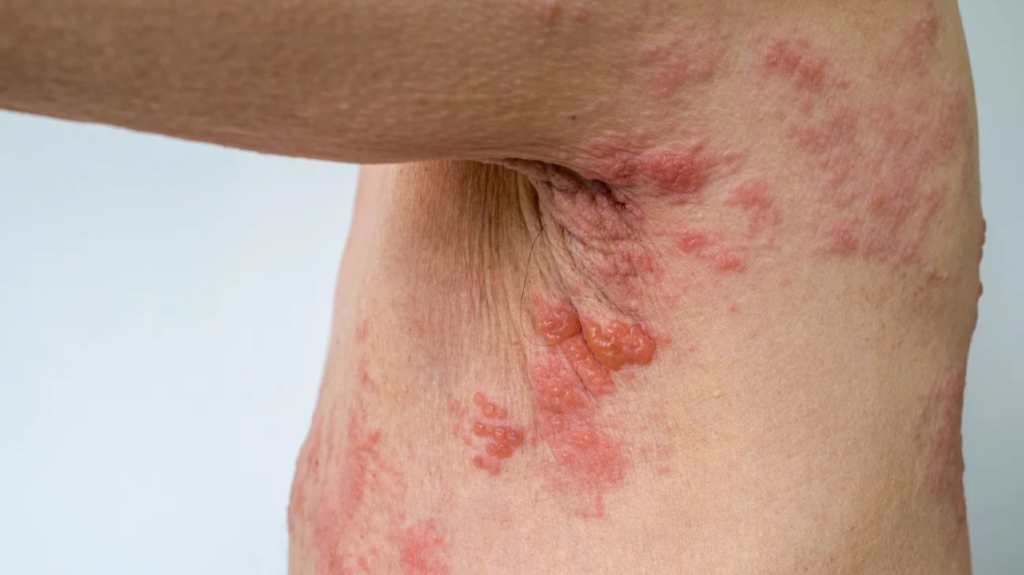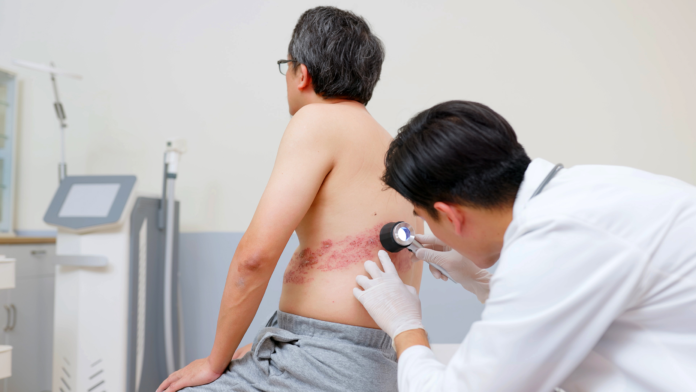Shingles (also herpes zoster), a reactivation of the varicella-zoster virus that causes chickenpox, can bring an unwelcome surprise of burning pain and a blistering rash. While not life-threatening, shingles can be quite uncomfortable. Let’s delve into the symptoms you might experience, what triggers the virus to come back, and the treatment options available to help you manage this condition.
What is shingles?
Watch out for shingles, a painful blistering rash caused by the varicella-zoster virus, the same one behind chickenpox. After you recover from chickenpox, the virus can lie dormant in your nerves for years. But beware; it can reactivate later in life as shingles, also known as herpes zoster. This resurgence brings a stripe of itchy blisters, usually on one side of your body, along with burning pain. While most people heal within a few weeks, shingles can be serious, so it’s important to be aware of the signs and symptoms.
Symptoms of shingles
Shingles symptoms can appear quite distinct and come on in stages. The initial warning signs are usually burning pain and a tingling sensation, typically felt on one side of your body. This discomfort often follows a specific nerve pathway, known as a dermatome. Soon after, a rash may develop in the same area. The rash itself can vary in color depending on your skin tone, ranging from red to dark pink, brown or even purplish. It’s important to note that not everyone with shingles will experience the rash.
Shingles on your back
Shingles doesn’t limit its blistery wrath to your belly. The tell-tale stripe of blisters can also erupt along your back, running down either side of your spine or lower back.

Shingles on buttocks
Shingles isn’t shy about targeting unexpected areas. While the torso is a common culprit, the virus can also reactivate and cause a painful rash on your buttocks. This, sometimes referred to as butt shingles,can be particularly uncomfortable due to constant friction from clothing. If you experience burning pain or tingling near your buttocks, followed by a rash, see a doctor right away to discuss treatment options for butt shingles.
Shingles of the eye
Be aware that shingles of the eye, medically called ophthalmic herpes zoster or herpes zoster ophthalmicus, is a possibility. Shingles of the eye can cause a blistering rash around your eye, including the eyelids, forehead, and sometimes even your nose. This shingles of the eye can be accompanied by burning or throbbing pain, redness, tearing, and blurred vision. While the discomfort and rash may eventually clear up, shingles of the eye left untreated can lead to serious consequences like permanent vision loss and corneal scarring.

Shingles on your face
Shingles isn’t just about torso woes. The blistering rash can appear on one side of your face too. This is especially worrisome if it’s near your ear, as it can increase your risk of hearing loss, balance problems, and facial muscle weakness. Shingles can also creep into your mouth, making eating painful and affecting your taste. And if it lands on your scalp, beware of hair-combing discomfort and potential permanent bald spots if left untreated.

Stages of shingles
Shingles typically follows a predictable course lasting 3 to 5 weeks according to the NIA. The reactivation of the varicella-zoster virus can kick things off with tingling, burning, numbness, or itching on one side of your body, commonly along the torso, back, or chest. Within a few days, a red rash appears in the affected area, often followed by small, fluid-filled blisters. Flu-like symptoms like fever, headache, and fatigue might also show up. The blisters then dry and scab over the next week or so, with the scabs eventually clearing after a few more weeks. But for some unlucky folks, the pain lingers even after the scabs disappear – a condition known as postherpetic neuralgia.
Shingles causes
Shingles is a nasty surprise that can erupt after a case of chickenpox. The culprit is the varicella-zoster virus, which lies dormant in your nerves after chickenpox and can reactivate later as shingles. Why this happens isn’t fully understood, but older adults with weaker immune systems seem more susceptible. Other risk factors include emotional stress, undergoing cancer treatment, or major surgery.
Who’s at risk for shingles?
Anyone who’s battled chickenpox is at risk for shingles, but some folks are more likely to experience this resurgence. According to the National Institute on Aging (NIA), the danger zone increases for people over 60, those with weakened immune systems due to conditions like HIV or cancer, and individuals who’ve undergone treatments that suppress immunity, such as chemotherapy or medications following an organ transplant. Even having shingles once doesn’t guarantee immunity, so it’s important to be aware of the risk factors.
Shingles diagnosis
Spotting shingles often involves a good look by your doctor. They’ll check your rash and blisters and ask about your health history. In some cases, a quick test might be needed. This involves a gentle swab of your rash or a blister to collect a sample. The sample is then sent to a lab to double-check for the shingles virus.
Shingles treatment
Shingles isn’t curable, but getting help early makes a big difference. Ideally, see your doctor within 3 days (72 hours) of noticing symptoms. They can give you medications to ease the discomfort and help you recover faster.
Homeopathic treatment for shingles
Homeopathic treatment for shingles although is not very effective or curable but it can help to lessen the effects of shingles. Cold baths and cleanse can help with homeopathic treatment for shingles.
Home remedies for shingles
While shingles require a doctor’s visit for proper diagnosis and treatment, home remedies can help ease your discomfort. These remedies include taking cold baths or showers to cleanse and soothe irritated skin. Applying wet, cold compresses directly to the rash can reduce pain and itching. You can also find relief by applying calamine lotion or creating a paste with water, baking soda, or cornstarch to calm the itch. Additionally, incorporating foods rich in vitamin A, B12, C, and E into your diet can support your immune system during recovery. Some people also find relief by taking L-lysine supplements to further strengthen their immune defenses.
How to prevent shingles
Getting vaccinated can help prevent serious illness from both chickenpox and shingles. Children should get two doses of the chickenpox vaccine, and adults who haven’t had chickenpox can get vaccinated too. While the chickenpox vaccine isn’t perfect, it’s very effective. For adults 50 and older, the shingles vaccine, Shingrix, is recommended to help prevent severe shingles symptoms and complications. Talk to your doctor to see if you need the shingles vaccine, even if you received an older shingles vaccine called Zostavax.
Shingles complications
Shingles itself may be uncomfortable, but watch out for these complications: Eye damage can happen from rashes near the eye. Blisters can become infected. Pneumonia is a possibility. Facial paralysis and hearing loss can occur with Ramsay Hunt syndrome, but early treatment is very effective. In rare cases, brain or spinal cord inflammation can develop, and these are serious.
Shingles in older adults
Shingles is especially common in those over 60, as their immune systems weaken with age. This makes them more prone to complications from shingles, such as severe rashes, infections, pneumonia, and even brain inflammation. To prevent these complications, the CDC recommends getting the shingles vaccine if you are 50 or older.

Shingles and pregnant women
Shingles itself is uncommon during pregnancy, but if you haven’t had chickenpox before, being around someone with shingles or chickenpox can give you chickenpox. This can be risky for your baby, depending on the trimester. Getting the chickenpox vaccine before pregnancy helps protect your child. While shingles likely won’t harm your baby, it’s still best to see a doctor right away if you develop a rash while pregnant.

FAQs
What usually triggers shingles?
Shingles comes from the varicella-zoster virus, the same one that causes chickenpox. After chickenpox, the virus lies dormant in your nerves. Shingles develops when something weakens your immune system, allowing the virus to reactivate. This is common in older adults, but stress, illness, medications, and other factors can also trigger shingles.
What are the signs of shingles?
When you feel burning at one side of your body it means that you are going to catch shingles.
Can you get shingles more than once?
Shingles usually don’t come back, but it can happen. A study found a 5% chance of recurrence within 4.4 years. Risk factors include having shingles for over a month, being between 51-70 years old, being female, and having certain health conditions.


